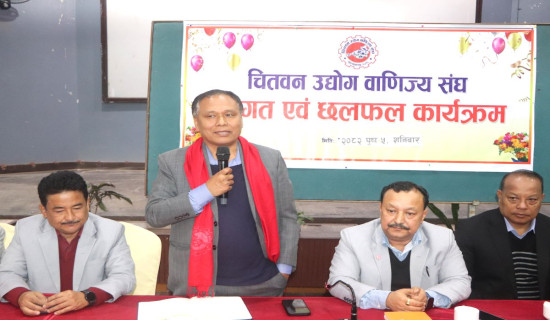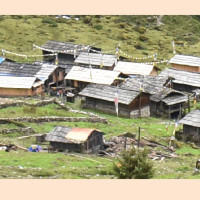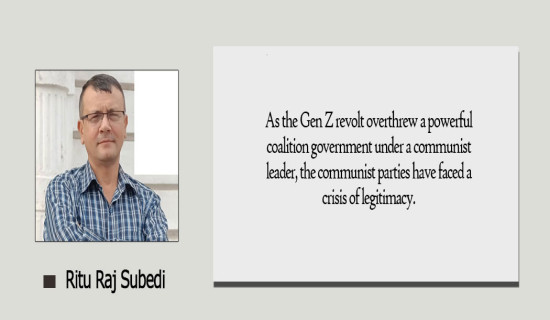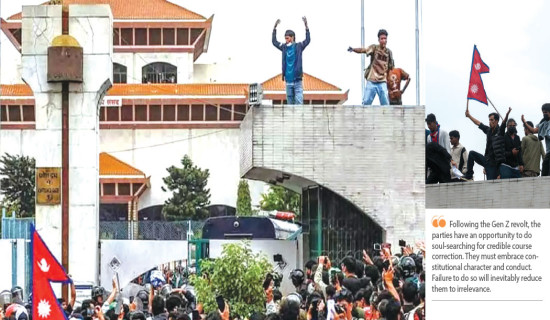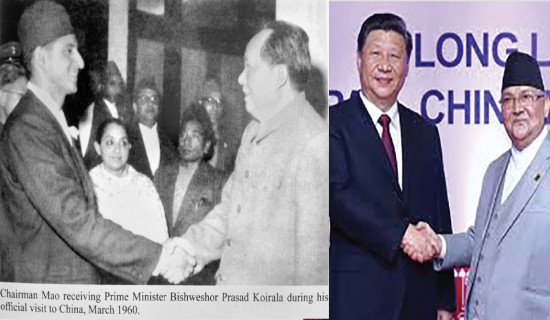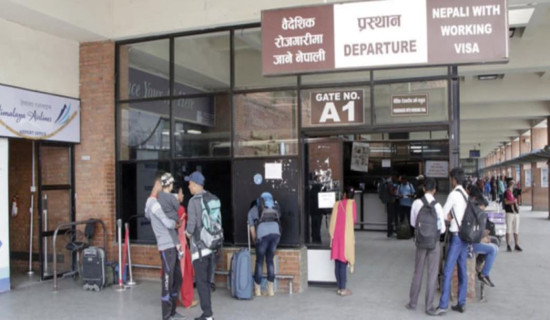- Sunday, 21 December 2025
Thriving Nepal-China Ties
Nepal and China have maintained a profound friendship since antiquity. Their bond continues to be a global exemplar, notwithstanding their significantly different geographical sizes, economic strengths and military capacities. Historical luminaries such as Bhrikuti, Ansu Barma, Araniko, Buddhabhadra and Hiuen Tsang played a vital role in nurturing trade, arts, culture, literature, security, marital ties, and high-level communication in ancient times. In the modern era, former Prime Ministers - Tanka Prasad Acharya and BP Koirala -, King Mahendra, Chairman Mao Zedong, Premier Chou Enlai and paramount leader Deng Xiaoping are the principal architects of Nepal-China relations.
This year, Nepal and China are observing the 70th anniversary of the establishment of diplomatic relations with a variety of programmes. Coinciding with this historic occasion, the Nepal-China Media Forum has brought 'Cordial Relations Of 70 Years.' The book not only traces the key diplomatic milestones of the two countries but also vividly captures stories of economic cooperation, cultural exchanges, religious, educational interactions and more. It contains 12 chapters, written in both Nepali and Chinese languages, with each highlighting the Nepal-China relations in a given period.
The first chapter, ‘That Historic Day,’ captures a momentous day when Nepal and China established diplomatic relations on August 1, 1955. Royal Advisor Sardar Gunjaman Singh of Nepal and Chinese General Yuan Zhongxian, who was then China's ambassador to India, had signed an agreement to set up diplomatic ties between the two nations. On August 2, the Chinese government appointed Yuan as its first ambassador to Nepal. The agreement was guided by Panchsheel (Five Principles of Peaceful Coexistence) that stresses respecting each other's independence, sovereignty, territorial integrity and the principle of equality and mutual benefits.
"The establishment of diplomatic ties with China not only widened Nepal’s foreign policy horizon but also provided a basis to maintain strategic balance with India,” states the book under its title 'From Past to Present.’ Nepal gradually exercised foreign policy autonomy as it, for the first time, put up independent diplomatic views at the United Nations in 1957. Of course, Ranas' India-centric and West-tilted policy did not remain dominant. Nepal also played its role in securing China's legitimate space in the UN.
In October 1956, the two countries inked another significant deal – the Agreement on Economic Aid, paving the way for enhancing economic cooperation between them. In line with this deal, China provided Rs. 100 million to Nepal, which helped operate Nepal Rastra Bank, set up on April 26, 1956. Now, China has become Nepal's largest investor. In the fiscal year 2080/81 B.S. alone, Chinese investors have injected Rs. 224 billion in 2,448 enterprises and projects across the country.
Nonetheless, a Treaty of Peace and Friendship that the Prime Ministers of both countries – BP Koirala and Chou Enlai – signed in Kathmandu on April 28, 1960, laid the foundation of bilateral cooperation between the two nations. The accords such as the China-Nepal Boundary Agreement (1960), Nepal-China Border Treaty (1961), Trade and Transit Agreement (2016), Memorandum of Understanding on Cooperation under the Belt and Road Initiative (2017) and Framework for Belt and Road Cooperation (2024) have remained crucial in boosting connectivity, investment, trade, infrastructure, technical and educational cooperation, tourism and people-to-people exchanges between the two neighbours. The construction of Araniko Highway, popularly known as Kodari Rajamarga, gave a concrete shape to Nepal-China ties, asserting Nepal’s geopolitical importance in South Asia.
The book has meticulously described Nepal-China ties in a broader geopolitical context. "Nepal-China ties acquired political, diplomatic and economic maturity from 1960 through 1980. During the Sino-India war, Nepal took a neutral stance, which enhanced its credibility as a non-aligned nation,” it states. While Nepal’s foreign policy was well-received in China, the latter’s policy of not attaching conditions on its aid to Nepal has helped build a positive impression of the northern neighbour among the Nepalis. China has always respected Nepal’s sovereignty, political choice and social system. “Quite the contrary, the Western nations have been active to fulfill their strategic interests on the pretext of promoting democracy, human rights and security cooperation,” it argues.
China is always concerned about whether Nepali soil will be used to create instability in the Tibet Autonomous Region but Nepal has always stuck to the One-China policy/principle and never allowed the disruptive forces to carry out their activities against its northern neighbour. Likewise, Nepal has persistently expressed opposition to ‘Taiwan independence’ and reiterated that Xizang matters are internal affairs of China. Under the title ‘Strong Relations, Changed Language,’ the book reveals that the term ‘One-China Policy’ came into circulation with the improved Sino-US ties in 1972, when the US president Richard Nixon had a historic meeting with Chairman Mao. Nepal's former prime minister Manmohan Adhikary has been credited with using this phrase for the first time during his visit to China in 1992.
Nepal-China relations experienced a significant transformation with Xi Jinping’s ascent to power in 2013. “President Xi’s policy towards Nepal is largely known as development diplomacy,” the book asserts in the chapter ‘Xi Jinping Era and Deepening of Nepal-China Relations.’ Nepal’s entry into the BRI, a huge increase in Chinese investment in infrastructure development and frequent high-level bilateral exchanges have taken Nepal-China relations to a new high. Their relations have yielded concrete outcomes since 2017, with joint military drill, expansion of internet networks, and construction of earthquake-damaged schools with Chinese grants and feasibility study of Kerung-Kathmandu railway. Bilateral trade, arrivals of Chinese tourists and the flow of investment has increased considerably .
In 2019, President Xi paid an official visit to Nepal, elevating Nepal-China relations to a strategic partnership. The two nations signed more than 20 agreements and understandings, putting the Trans-Himalayan Multi-dimensional Connectivity Network at the centre. This Network serves as the Nepal-China economic corridor, aimed at transforming Nepal into a land-linked nation from a landlocked one. In December last year, at least 10 projects were selected to be executed under the BRI Cooperation Framework but the two countries are yet to finalise the funding modality to implement them to their mutual benefit.
The book covers diverse areas of cooperation but it bears the errors of overlapping information and historical anecdotes. Nonetheless, it opens a window for readers to better grasp Nepal-China ties in the new century. In their forewords, Speaker Devraj Ghimire notes that the book chronicles a deep bond between the two countries, while Chinese ambassador to Nepal Chen Song observes that it provides a vision for future cooperation. Their perceptive views add more weight to the book, expected to immortalise the age-old fraternity between the two close neighbours. The Nepal-China Media Forum deserves appreciation for this far-reaching undertaking.
(The author is Deputy Executive Editor of this daily.)



